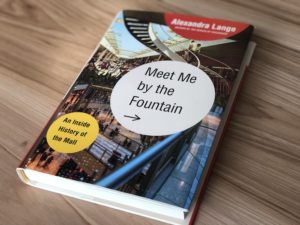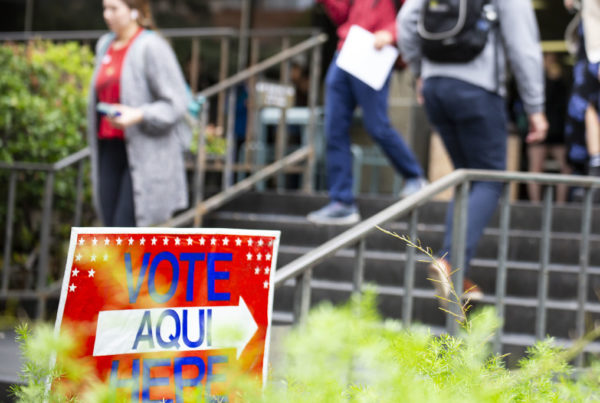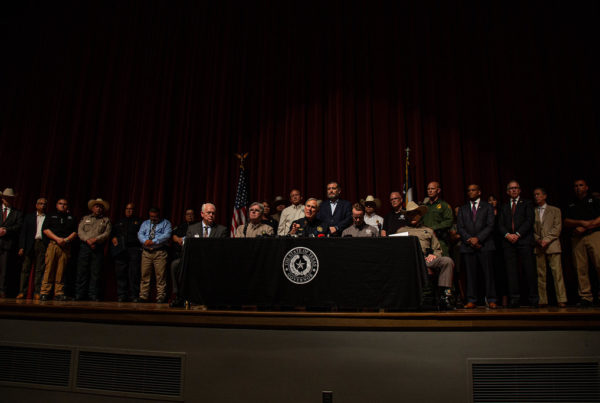Generations of Americans have memories related to malls: the smells of baking pretzels and cookies, the sounds of fountains and canned, indistinguishable tunes, and the exhaustion of realizing after a few hours of shopping that you need to walk to other side of the enormous structure.
But the new book “Meet Me by the Fountain: An Inside History of the Mall” makes an argument for saving these structures for reasons beyond our nostalgia. Architecture critic Alexandra Lange says malls have been and can again be spaces for community connection beyond shopping.
“People know how to find the mall, and that’s something that new uses could exploit and create new kinds of community centers in those locations,” Lange said.
Listen to the interview in the audio player above or read the transcript below.
This transcript has been edited lightly for clarity.
 Texas Standard: Can you take us back to malls in their prime?
Texas Standard: Can you take us back to malls in their prime?
Alexandra Lange: The mall, as we know it, was really created by a Viennese émigré architect named Victor Gruen. And he saw malls as a replacement for downtown Main Street in the suburbs, really to give people a place to gather and spend time during the day as well as doing their shopping.
For a Texas audience, we should talk about some malls that really defined some of these mall categories. North Park in Dallas is one.
North Park is really one of my favorite malls. It opened in 1965 and was developed by the Nasher family, which still owns it. And it really combined very beautiful up-to-date modern architecture with the best stores, including Neiman Marcus and some great things like a fountain that generations of kids have been able to play on.
I think back to those malls of the 60s and they seemed to speak to dreams of the future — Eero Saarinen-type interior spaces, vaulted concrete facades.
Yeah, absolutely. Actually, some of Eero Saarinen’s partners designed the Neiman Marcus store at North Park.
One of the things that I found out during my research was that a lot of architects that people have heard of, like I.M. Pei, designed shopping malls and we just don’t talk about that part of their work anymore. We tend to talk about things like museums and airports. But really, I think the mall was as advanced technologically as some of those other forms, and it was a great postwar American invention.
What about the Houston Galleria?
The Houston Galleria is actually way grander than North Park. It has multiple levels, it has that long glass roof, it has an ice-skating rink — which was actually an innovation that they pioneered. And the other interesting thing about the Houston Galleria is that Gerald Hines, its developer, really intended it to be the center of a whole new neighborhood. He saw it as really an urban center, a hub outside of Houston’s traditional downtown.
Many malls have been fully demolished or abandoned. They’ve sort of become ghost towns in some places. Are they worth preserving?
Definitely. And one of my favorite creative examples of mall reuse is in Austin, Texas. The Austin Community College Highland branch used to be the Highland Mall, one of the first indoor malls in Austin.
First of all, malls represent a tremendous amount of material resources – the concrete and steel that goes into making a mall. And as we start to be more conscious about climate change, we shouldn’t just be throwing all of that in a dumpster.
But also, malls have really been community spaces, and they have a tremendous amount of cultural and physical memory. People know how to find the mall, and that’s something that new uses could exploit and create new kinds of community centers in those locations.
What are we losing with malls disappearing?
I think despite all the things that have moved online, people really want to be with other people. We haven’t changed as humans, and especially coming out of the pandemic, I think people are seeking communal experiences again.
Where I’m from in Brooklyn, we saw a tremendous use of public parks because people just wanted to be out and seeing each other even when indoor spaces weren’t safe. Well, malls, you know, some are indoor-outdoor, especially in a nice climate like parts of Texas. But even when we can gather safely indoors again, I think that people are going to want to come together to eat together, to touch the merchandise. And if we don’t have spaces like malls to do that in, I think it’s really sad and it can cause people to be more disconnected from each other.
What is the future of the mall as you see it?
I think there are a good number of malls, like The Grove, like The Domain, that are going to keep on being malls. I think the death of the mall has been slightly exaggerated, but there are a number, literally hundreds, that really are not fit to purpose anymore. They don’t work for their communities. They don’t work for their neighborhoods. They don’t have shops that people really want to shop at. And those are, I think, a great opportunity to get creative and reuse that space and some of the buildings as well for things that those communities really do need, whether they have educational uses or can be medical facilities. Some have been partially demolished and turned into public parks with new public housing. They are actually this resource of space in pretty densely built-up cities and suburbs.
Do you have a favorite mall?
I actually really like North Park. I first went there probably around 10 years ago, and I was just blown away with how beautiful it was. The fountain, the sculpture, the stores – it’s kind of like the perfect mall.
It seems so commercial on one level, yet a lot of the architecture is kind of undeniable, certainly for mid-century standards.
I think that the Nasher family always had pretty high ambitions for it. They were very-up-to-date with the architects they knew, the art they were starting to collect. So, they always wanted it to be a showplace for Dallasites.
And I think part of the original ethos from Victor Gruen was the idea that if you could make a nice place for people, they would stay longer, spend more time and spend more money. So, making a mall nice is definitely a capitalist enterprise, but that doesn’t mean you can’t enjoy it while you’re there.














